The common ground between the critics and champions of purpose is the desire for authenticity. Our Challenge on Purpose asks how we can move beyond rhetoric to embed purpose meaningfully and consistently across business. We initially identified Five Pillars to build authentic purpose within organisations and sought the opinions of the Business Fights Poverty network to gain deeper insights into the problem.
This article draws from our online conversation on how we can save purpose from purpose-wash. The discussion deepened our understanding of the Five Pillars and raised four themes which help businesses avoid the purpose-wash trap: Leadership; Profit; Sustainability; and Transparency.
Collaborative and Inclusive Leadership
Authentic purpose is led from the top but owned by all employees. Leaders who are serious about authenticity define the company’s long-term purpose in consultation with employees and other stakeholders, and then allow this purpose to become the single most important criteria to evaluate all future business decisions. Leaders can harness the growing enthusiasm of employees for purposeful work to generate new ideas and initiatives by ensuring that are given the time and support they need. The democratisation of company decision-making requires leaders to display a degree of humility, willingness to learn from employees and to collaborate across all levels of the business, value chain and wider organisational networks. Accountability is also key – to achieve authenticity, employees must be empowered by the organisational culture to hold leaders to account.
Leadership on purpose requires a shift in mindset away from the ‘greed is good’ mentality of the 1980s and 1990s, to an acknowledgement of the interconnection between the finite nature of the planet’s resources, the well-being of people, and long-term business success. This is not always an easy shift for leaders to make, but there is help available for leaders who want to place purpose at the heart of their operations. CISL’s webinars on Purposeful Leadership are a good place to start, and business advisors and marketing consultants can work with senior leadership to leverage the commercial and organisational opportunities that follow from the mindset shift to a more inclusive, collaborative way of leading.
As the idea of purpose becomes more prevalent, the temptation is to loudly advertise purpose through brands and marketing activities as well as annual reports. In fact, leaders should be cautious to avoid falling into this purpose-wash trap. Pilar Pedrinelli from Unilever warns that companies should first make meaningful progress on four of our Five Pillars – Define, Do, Live, Partner – before focusing on Say. “Now that doesn’t mean everything should have already had significant results before you are getting to a Say. Sometimes it’s about taking other people with you on the journey; sometimes the Say is the Do (especially on advocacy). The important thing is that everything we do is an integral part of a long term plan.” As the Head of Social Impact at Visa remarked at our Oxford Conference, leaders must be honest with employees and other stakeholders, balancing the tension between short-term expectation and the long-term opportunity to create real transformation. Leaders’ failure to do so can result in allegations of purpose-washing, even where there is genuine commitment to purpose.
Purpose is the Primary Goal; Profit is a By-Product
Some fear that becoming a purpose-led business could adversely affect profits. However, profit and purpose are not opposite ends of a spectrum; driving purpose whilst making profit is possible. At Unilever, brands with purpose grew 69% faster than the rest. Indeed, purpose may become essential to future profit as consumers become increasingly conscious of the social and environmental impacts of their purchases. Alan Jope, the company’s CEO, recently announced that “in the future, every Unilever brand will be a brand with purpose.”
Purpose led-businesses view profit not as an end in itself, but as a means to invest more resources in pursuit of purpose, their primary goal. They also ask “how right is our profit?” Gib Bulloch noted that “rather than profit maximising, a purpose-driven business will ‘optimise’ profit in balance with its mission and the needs of wider stakeholders.” This requires a change in investor expectations, transitioning to a focus on long-term gains rather than short-term share prices, and incentivising CEOs, Boards and employees in ways which reward positive impact on human well-being in addition to financial performance.
Transformational reform of business models is tough in the context of a system that rewards short term profit maximisation. Will Gardner suggests that businesses “need more hero examples of companies like Interface that are truly bold in changing their core model and value chain in pursuit of their Mission.” Investors need to be involved in the conversation. According to Tasneem Mayet, businesses keen to engage investors on purpose should analyse and publically report “how purpose impacts your specific company’s financial performance (perhaps through materiality assessments or by linking sustainability goals such as the UN SDGs) through scenario analysis and stress testing.” Such reporting is often welcomed; mindsets are changing, particularly as millennials join the investor class.
Doing No Harm: Authentic Purpose Needs Sustainability
Sustainability has an impact on how authentic a purpose appears; businesses cannot claim to have a social purpose if they deliver it in a way that harms people or the planet. However the two concepts are distinct and easily confused. Both terms relate to an organisations’ social and environmental impact and are connected to social justice ideals.
Justine Harris highlights the common benefits: “They are both very powerful tools to build trust both internally and with external stakeholders. They can both provide a framework for ‘better’ decision making. And they can both define how a business can create value in the longer term in a way that takes account of global challenges and the need for businesses to make a contribution to wider society beyond profit (taxes and employment).”
Nevertheless, there are important differences. Whereas sustainability strategy focuses on specific areas of operational risk (for example supply chain, health and safety, environment), purpose is the organisation’s reason for being. Subsequently, purpose acts as a guiding star to motivate action and guide decision-making. In essence, purpose is the “why” of an organisation, and sustainability is part of the “how”.
Many organisations, including Vodafone Group Plc, are putting sustainability at the heart of their purpose framework. A recent round table defined as “meaningful, enduring reason for an organization to exist that provides solutions to global challenges, or benefits society, in a way that sustains the social and environmental systems we rely upon.” Ben Kellard further explains: “this [definition] expresses how purpose can drive the core business to create ongoing value across its wider network, in a way that contributes to a sustainable future.”
Boosting Transparency through New Technologies and Partnerships
As more and more businesses join up to the notion of purpose (at least in principle), tools and certifications which measure social impact become invaluable to distinguish the truly purpose-led organisations from those that are paying lip-service. Businesses can be transparent by publishing objectives, targets and KPIs in a purpose framework, so a business could measure progress, adjust and innovate. However, activities to measure impact must not distract from the real work of driving forward the organisation’s purpose in meaningful ways. Sally Jackson, Senior Vice President, Global Communications and CEO Office, GSK, explained at our Oxford Conference this year how company-wide objectives and KPIs for purpose are linked to individual employee goals so that everyone can see how their day-to-day contribution matters. This approach has allowed GSK to stay focused on their purpose whilst boosting employee engagement.
Transparency is one area in which cross-sector partnerships between business, NGOs and government are essential. Technology such as that being developed by PositiveBlockchain has a role to play in increasing the availability of data which is independently verified by third parties. Such initiatives can build trust in reporting mechanisms and give recognition to companies who are authentically purpose-driven. Long-term, the goal is cross-sector, digital, integrated reporting similar to that provided by S&P and Moody’s in relation to credit-rating, a sort of “Bloomberg for Good”. Independent certifications and assessment tools developed by organisations such as B Corp, Responsible 100 and CISL offer a starting point towards this ambition. However, as seen with the SDGs, it is hard to create reliable models and indicators of human well-being. Successful measurement of authentic purpose will depend on collaboratively devising new theories of value and economic development, which aim to fulfil human needs within our finite planetary resources.
Conclusion
Given the global challenges facing us, it is vital that all businesses, particularly the largest and most influential, develop an authentic sense of purpose so that their vast skills and resources can be directed towards humanity’s greatest challenges. Unfortunately, the potential of purpose is in danger as more companies embrace the rhetoric without following through with concrete action. Companies looking to avoid purpose-wash can structure their activities around the Five Pillars and keep a mindful watch on their approach to Leadership, Profit, Sustainability and Transparency.
Specifically, leaders should find ways to democratise the processes by which purpose is defined and integrated throughout their entire operations and supply chain, taking a collaborative approach which empowers employees, customers, investors and other stakeholders to play their part and to hold leadership to account. In doing so, leaders need to communicate clearly to set realistic expectations whilst advocating an inspiring vision for the future. Authenticity of purpose requires businesses to re-evaluate their approach to profit so that it becomes a means and a by-product of fulfilling their purpose, rather than an end-goal in itself. This will require new conversations with investors about balancing short-term financial goals with long-term success, and incentive schemes which take into account progress towards human well-being. As purpose is integrated across all areas of the core business, operations must be carried out in a way that does no harm and contributes to a sustainable future for people and planet. Finally, business can build transparency on purpose by engaging with new technologies and cross-sector partnerships for measuring and evaluating progress against robust indicators of purpose-led goals. These efforts can then form the basis for a unified global system to recognise the achievements of truly purpose-led companies.
Online Discussion Experts
Gib Bulloch, Intrapreneur in Residence, Business Fights Poverty
Aline Costa, Head of Brand and Innovation, Purpose House
Will Gardner, B Leader, B Corp UK
Justine Harris, Former Group Head of Sustainable Business, Vodafone
Ben Kellard, Director of Business Strategy, Cambridge Institute for Sustainability Leadership
Valentino Magliaro, Civic Leader – Italy, Obama Foundation & TEDx
Tasneem Mayet, DIrector, UKIFC
Pilar Pedrinelli, Global Purpose and Vanilla for Change Lead, Unilever
The Five Pillars to Embed Authentic Purpose
Define
Defining values and a purpose which resonates with the companies’ core business, its consumers, employees and other stakeholders
Do
Placing Purpose at the centre of business strategy and implementing it coherently across all areas of the business and value chain.
Live
Creating an organisational culture that supports long-term commitment to the Purpose, and empowers employees to contribute to the Purpose and to hold the company to account.
Say
Ensure consistency between Purpose, branding, and policy advocacy.
Partner
Form creative partnerships with other businesses, NGOs, and government to drive systems-level change.










